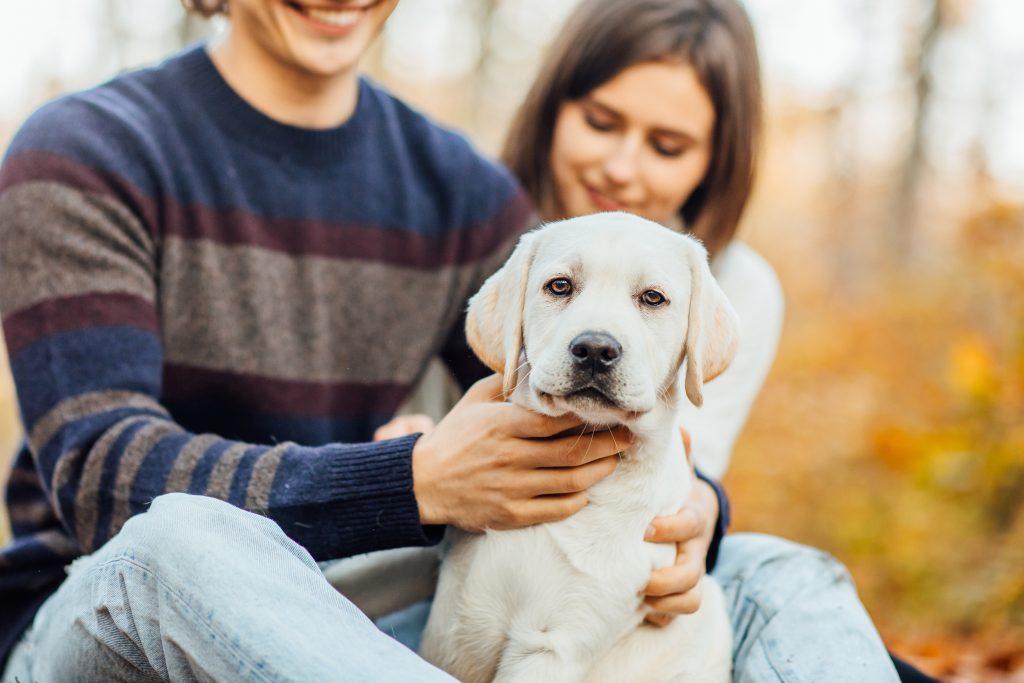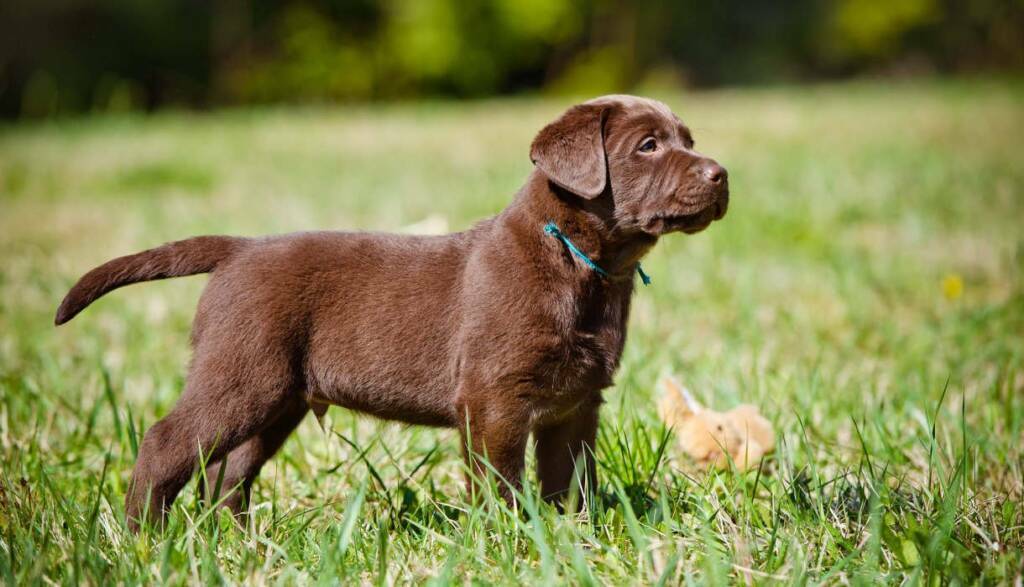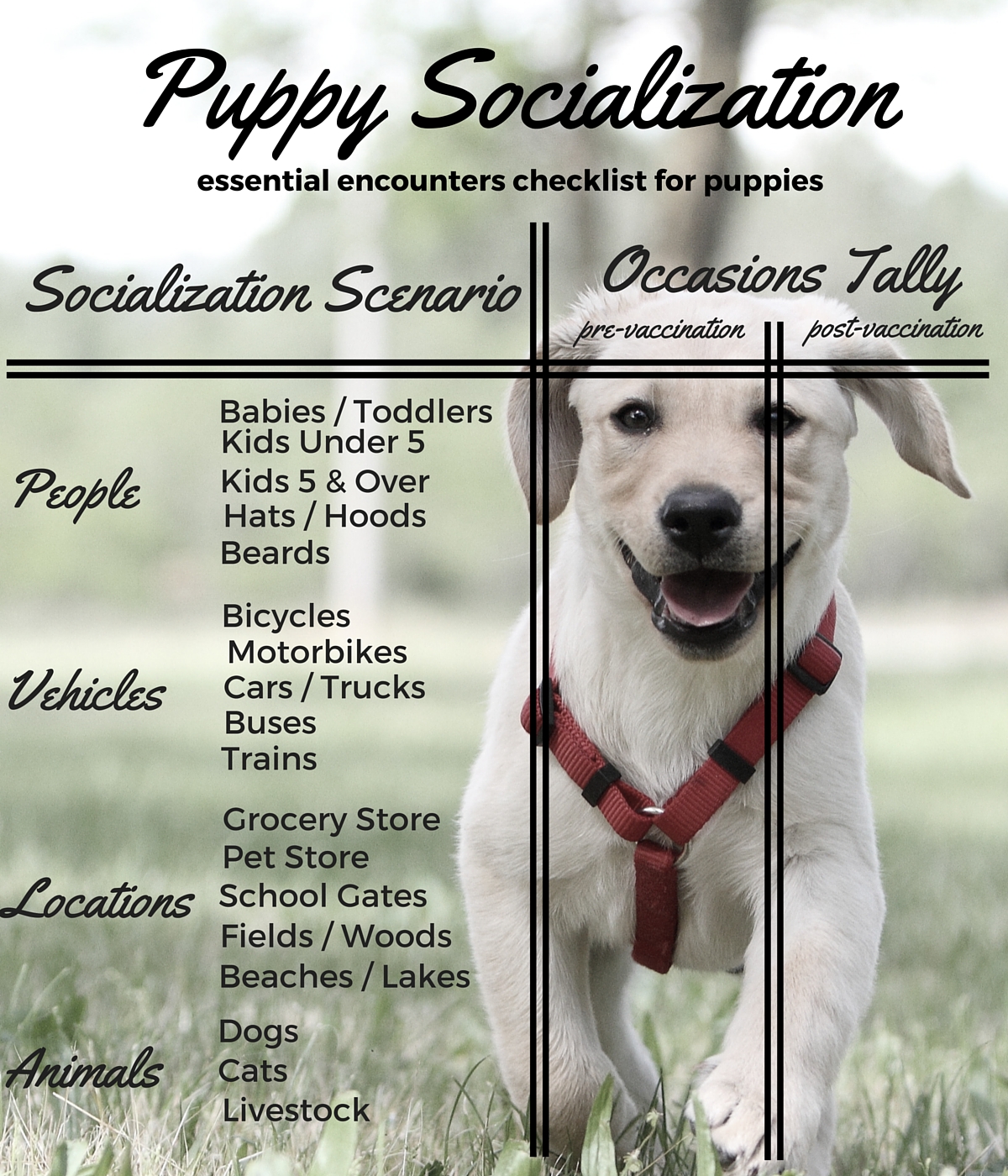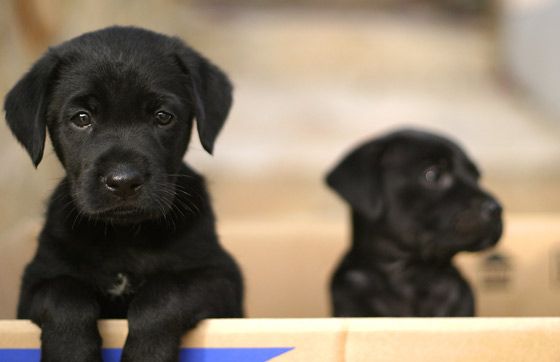We will look at what puppy socialization is and how to socialize a puppy in this article. Providing you with lots of helpful information on how to maximize your puppy socialization period, puppy socialization classes, and a handy puppy socialization checklist.
We all want a friendly, happy Labrador puppy. An individual who will greet anyone and everything you encounter with confidence. As a result of their fears, anxious dogs are more likely to be aggressive. Spend some time socializing your puppy during his first few weeks with your family if you want to give him the best chance of developing into an outgoing and cheerful dog.
Puppy Socialization: What Is It?
The process of puppy socialization involves familiarizing your new puppy with a variety of experiences, people, and scenarios that he may encounter as an adult. Your small puppy will grow into a confident and friendly dog by going through this process.
Socializing Your Puppy: When Should You Do It?
Puppy socialization has a very short window. By fourteen weeks of age, it is closing fast and is almost certainly closed by sixteen weeks of age. You need to act quickly.
Puppy Socialization Period – What Is It?
It is recommended to socialize puppies between the ages of 8 and 16 weeks. It is during this age when your puppy has what is known as a socialization window. A period when they are unafraid of new experiences and will accept anyone new they meet.
Your puppy’s ancestors had to be wary of strange experiences to stay safe, so this window closes.
What causes the puppy socialization window to close?
The ancestors of our dogs lived in a dangerous and uncertain world in the wild. Small puppies that wandered about in the vicinity of larger predators wouldn’t last very long. Once they leave the safety of their den and venture out into the wider world, puppies must keep away from strange and potentially dangerous objects, animals, and experiences. A natural tendency to be nervous when faced with novelty ensures that they do this. The majority of wild animals suffer from neophobia to some degree.
Socializing Your Puppy: How to Get the Most Out of It
When a puppy is kept out of contact with people, cars, dogs, and other trappings of the modern world until the socialization period is over, he will most likely be a fearful dog. He may fear death. The process of helping these dogs is longer and slower, but it is possible.
Most puppies have not been shut away in this way. They are raised within a family and can accept many new experiences. If you plan to use the window of socialization, you will need to arrange your life for a few weeks after bringing your puppy home so that he or she is exposed to many different people and places.
How To Socialize A Puppy
During the first sixteen weeks of a dog’s life, you should expose him to as many everyday events as possible, which he would not be exposed to if he lived at home alone. The easiest way to accomplish this is to list the main socialization categories and check them off as they are encountered and accepted by the puppy. The things he finds scary will need to be revisited until he is comfortable with them.
Socialization takes place in two phases: before vaccination and after vaccination. While the puppy is in your arms during the pre-vaccination phase, you should work through as many categories as possible, and then repeat the process with the puppy on a leash during the post-vaccination phase.
Socialization of puppies before vaccination
You will need to keep your puppy away from other dogs whose vaccination status is unknown until his vaccinations are fully effective. Additionally, you’ll need to keep him away from places such a dog might have used as a toilet. As a result, you will have to carry your puppy wherever you go in public.
The countryside is also hazardous as foxes and rats can carry fatal diseases, from which your puppy needs to be protected. Accordingly, his vaccine status must be at its maximum before he can be discharged. Typically, this occurs one week after his final vaccination at around 12 weeks old, depending on your veterinarian. As you can see, this leaves very little time to socialize following vaccination.
You will be taking your puppy out and about with him frequently during this period, so he must be used to traveling in the car. Do not worry if he becomes ill during the first few rides. After a meal, avoid traveling and the sickness should go away within a few days. Consult your veterinarian if carsickness persists or you are concerned.
Socialization of puppies after vaccination
You will have a busy two weeks ahead of when your puppy will finally be able to lay down on the ground in public places and the countryside. This is the time when you should take your puppy to as many different locations as possible before the critical window closes.
Guide to socializing puppies
The following are the main categories to which you should socialize your puppy. Some categories overlap so that you can hit two birds with one stone. When you take the time to ensure that your dog is comfortable in each category, he is likely to grow up confident and friendly no matter where he ends up.
- People
- Vehicles
- Locations
- Animals
Get a copy of this puppy socialization checklist and keep a running tally of how many times he encounters each one
Checklist for socializing puppies
There are two columns on your puppy socialization checklist. There is one for before and one for after he has finished his vaccination course. Attach your checklist to the refrigerator. You should keep a running tally of the times your puppy encounters each of the described scenarios.
By the time your puppy is 16 weeks old, you should have ten tallies for each item in each column. To count the number of occasions, not just the number of people met on one occasion, the tally must be based on the number of times. For your pup to become familiar with ten different babies at one time, for example, you need to meet them on ten different days.
Several of the items can be encountered at the same time, however. If you have a tally mark under bus, train, car, and motorbike each time you go into town, you might be able to add it to your list when you get home. If you have any questions regarding how to use your checklist, please post them in the comments section below so that we can answer them for you.
People And Puppy Socialization
You need to make sure that your dog is well socialized to a variety of strangers. Your puppy is not well socialized merely because he has met many of your adult friends. He needs to meet people of all shapes, sizes, and genders, and in a variety of clothing (uniforms, casual clothes, reflective gear, motorcycle helmets, etc.).
The most important thing is to meet children of all ages. The movements and sounds of very small children differ from those of older children and adults, and they can also act unexpectedly. Before allowing your puppy near children, make sure he is not scared of them.
Puppy Socialization with Vehicles
Buses and trucks, motorbikes and tractors, bikes and trains, cars and dustbin lorries, and trains. Your dog should feel comfortable around them. Most of these things can be found in a town center at the same time.
Locations for puppy socialization
You can quickly introduce your puppy to a wide variety of people by standing outside your local supermarket with him. You will be surrounded by admirers within minutes after purchasing a Labrador puppy. Visit the school gates at the end of the school day to see how many children he meets.
Also, a visit to the railway station is a useful and interesting experience for a puppy. You should take the pup to the high street in a busy town, and if it is summer, you can take the pup to summer fairs or shows. There are fields and woods, rivers and ponds in the countryside. He will learn to climb through mud and leaves, heather and bracken.
If it is not too cold, introduce your pup to splashing in the water and exploring different types of terrain. Streams and ponds should be explored first, followed by puddles. He will stand in good stead later if he swims around happily now. Much of this will have to wait until after vaccination.
Puppy Socialization With Animals
You can introduce your puppy to livestock in a very controlled manner if you have the opportunity. Let him look at some cows or horses while you hold him. There is no intention to train him to behave around them, that comes later. This is just to ensure that he is not afraid of them.
Your dog must enjoy being around other dogs. Despite the importance of dog-to-dog socialization, it is also important to remember that you cannot predict a dog’s behavior.
You shouldn’t be in a hurry to introduce your puppy to strangers’ dogs, as a bad experience can have long-lasting effects. Introduce a friendly, non-bouncy, vaccinated adult dog if you have a friend with one, but be sure to supervise closely. Dogs, even the nicest of them, can be a bit overwhelmed by other people’s puppies.
Classes for socializing puppies
For puppies that have received their first vaccination, some dog trainers offer puppy socialization classes. It will be helpful to socialize your puppy with other puppies if you enroll in a class like this. Look for a class that a friend has recommended since standards vary and sufficient supervision should be provided.
The purpose of puppy socialization classes is to help your puppy become more confident around other dogs and people. These classes can assist you in doing this. The important thing to remember is that they are not a substitute for getting out on your own.
You will have a small group of people in your puppy socialization classes. Most likely the same people will come each week, and most of your time will be spent in a similar environment. They are also a good way to meet other dog owners and to build your puppy’s confidence if your puppy socialization class is well run. You should, however, follow the checklists on your own as well.
Keeping your puppy socialized
Your puppy will become more cautious about engaging in new activities after the ‘window’ for socialization has passed. If you work your way through the categories above, he will be able to deal with most of the normal life events.
Take him out and about and revisit some of the above scenarios from time to time. Keeping him confident and unafraid will help him to live a long, fulfilling life as a well-balanced canine citizen.
What Are the Benefits of Puppy Socialization?
A rural Labrador might be afraid of trains, and a city dog might be scared of cows, but it doesn’t make a difference. Is it worth the effort to socialize him with them?
The process of socialization is not easy. There is more to it than just exposing your dog to things he might encounter locally. There are repercussions as well. The more things your dog is exposed to during the socialization window, the more robust he will become emotionally and the better he will cope with anything new. He will inevitably encounter new things. Dogs that have been poorly socialized are likely to be fearful of many things, not just the ones you do not think are important. More importantly, poorly socialized dogs can be dangerous.
Dangerous dogs can be prevented by puppy socialization
Many of our dogs have powerful jaws and are strong animals. In less than a minute, a ten-week-old raw-fed Labrador puppy can crunch and crush bones the thickness of your finger. Can you imagine what she would be capable of as an adult? The majority of dogs are capable of harming people, and a few are capable of killing. The majority of dogs in our world live peacefully and never bite anyone.
Normal healthy dogs do not bite people because they have been socialized. Poor socialization is the cause of many, if not most, dog bites.
Socialization And Temperament Of A Puppy
Intentional socialization experiences for puppies are not the only factor that prevents adult dogs from becoming fearful. Selective breeding has reduced natural fearfulness in some of our domestic dog breeds to some extent. However, you cannot assume that just because you have a Labrador that you do not need to socialize him.
Individuals within a breed vary widely, so the breed of a dog is more of an indicator than a guarantee of temperament. To grow up to be confident and friendly, some dogs require some deliberate socialization. However, other dogs need a great deal of deliberate and intense socialization to become great canine citizens. It’s impossible to know what category your puppy will fall into until it’s too late.
Socializing puppies is important
The puppy socialization window should be used to the best of your abilities since you cannot predict what your puppy’s personality will be in the future. Even though it may be difficult and inconvenient for you, you need to immerse yourself in socializing with your puppy as soon as he arrives at your home.
Fear is the primary cause of aggression in dogs. When we remove the fear, we often eliminate aggression in dogs. Dogs should not be frightened by strangers, new situations, or different locations. We want our dogs to view the human world as their haven, as a place where they feel at home.
Puppy socialization helps you get the dog you want to have as a companion. One that has a wealth of experience to match against new experiences. Who knows that people of all shapes and sizes are not a threat and that the world is one big happy playground. Time and dedication are required, but the results are worth the effort.
When should I socialize my lab puppy?
The ideal puppy socialization period is between 8 and 16 weeks go age. During this age, your puppy has what is known as a socialization window. A period of time when they have little fear of new experiences and will widely accept anyone new.
Can I socialize with my 10-week old puppy?
Puppy Socialization Starts With the Breeder: 8-to-12 Weeks. Eight to ten weeks is the age at which most breeders send puppies to their new homes, and it is important to let buyers know that they need to continue with socialization when they get their new puppy home. The pups need to continue meeting new people.
Can you socialize with a 4-month-old puppy?
The socialization process should start as early as 9-22 weeks of age and will help through the puppy fear phase. Never push your puppy into situations he is uncomfortable with. Your 4-month-old puppy should be able to discover the world at his own pace, and it is your job to make him feel comfortable doing so!
What happens if a dog is not socialized?
Without proper socialization, dogs may become anxious and fearful of anything unfamiliar. This could give rise to serious behavioral problems, such as aggression or nervous behavior.
Are Lab puppies destructive?
We tend to associate chewing and destructive behavior with very young puppies, under about four months of age. Unfortunately, this assumption is largely flawed. The reality is that Labradors are often at their MOST destructive between 8 and 12 months old.




